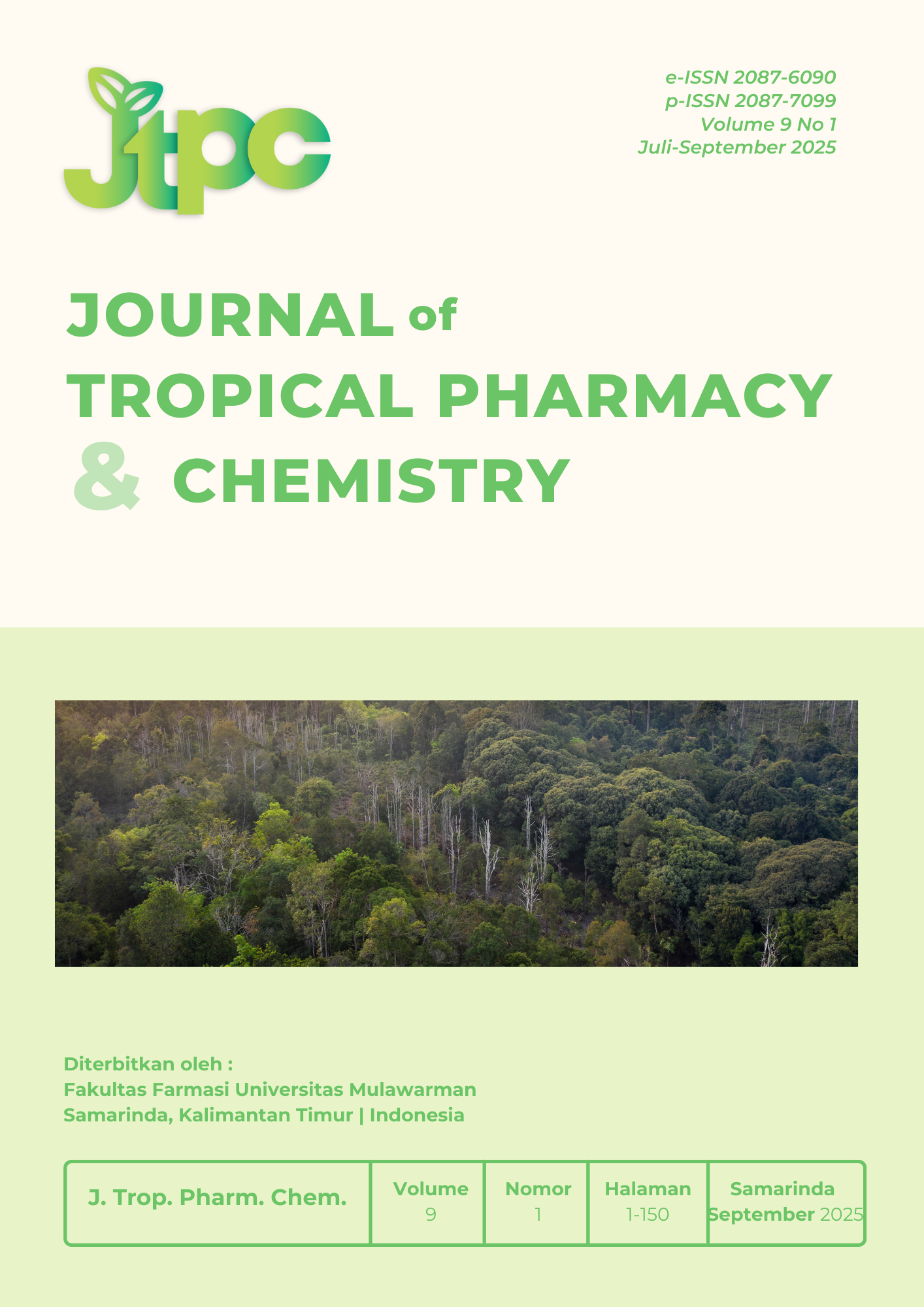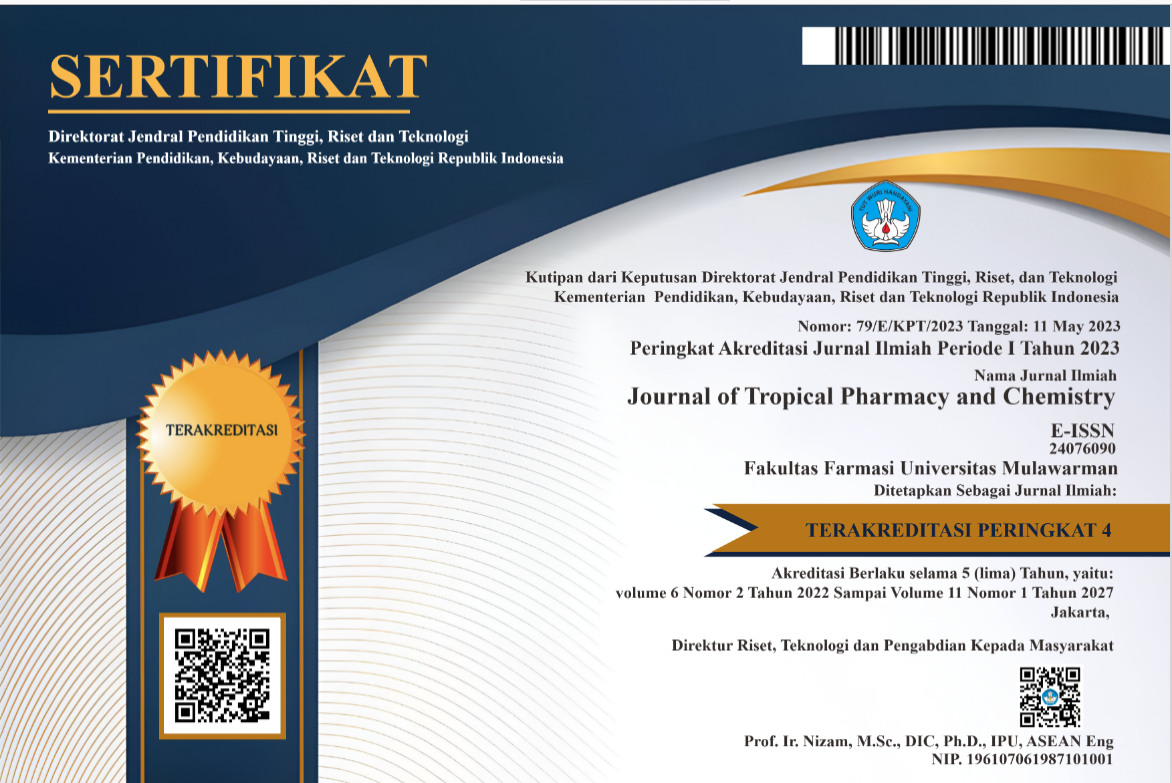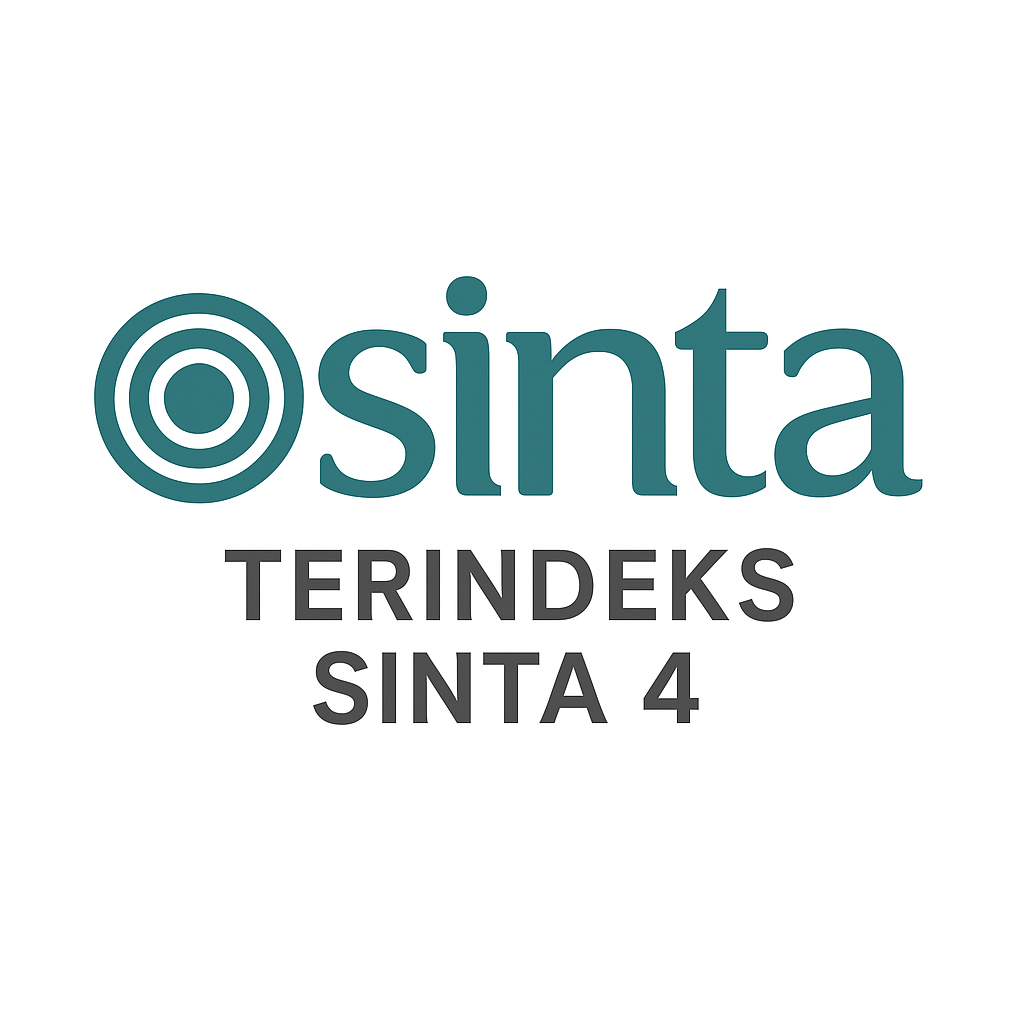The Accuracy of The Malnutrition Screening Tool (MST) for Identifying Malnutrition Risk in Stroke Patient
DOI:
https://doi.org/10.30872/jtpc.v9i1.292Keywords:
Malnutrition, Malnutrition Screening Tool, Nutrition Status, Stroke, Subjective Global AssessmentAbstract
Malnutrition in stroke patients is associated with poor clinical outcomes, making early nutritional assessment essential, as it is a modifiable risk factor. The Malnutrition Screening Tool (MST) offers a rapid and simple approach for nutritional screening; however, its application in stroke populations remains limited. This study aimed to evaluate the diagnostic accuracy of the MST compared with the Subjective Global Assessment (SGA) in stroke patients. A cross-sectional study was conducted involving 96 acute stroke patients at Atma Jaya Hospital, Jakarta, using retrospective medical records. The MST was employed for nutritional screening, while nutritional status was determined using the SGA. Bivariate analyses assessed associations between patient characteristics, MST scores, Body Mass Index (BMI), hemoglobin levels, and total lymphocyte count (TLC) with SGA classification. Logistic regression was used to determine the independent association between MST scores and nutritional status, and the Area Under the Curve (AUC) was calculated to evaluate MST validity. Results showed that 25% of patients were malnourished according to the SGA. Age, BMI, hemoglobin, TLC, and MST scores were significantly associated with nutritional status (p < 0.05). An MST score ≥2 increased the odds of malnutrition by 3.115 (p < 0.05). The MST demonstrated 75.0% sensitivity, 51.4% specificity, and an AUC of 0.674, indicating adequate diagnostic performance, though complementary assessment tools are recommended.
Downloads
References
[1] M. K. Kang et al., “Geriatric nutritional risk index predicts poor outcomes in patients with acute ischemic stroke-automated undernutrition screen tool,” PLoS One, vol. 15, no. 2, p. e0228738, 2020.
[2] H. Naito et al., “Prognostic role of the controlling nutritional status score in acute ischemic stroke among stroke subtypes,” J Neurol Sci, vol. 416, p. 116984, Sep. 2020, doi: 10.1016/j.jns.2020.116984.
[3] H. Tang et al., “Malnutrition and risk of mortality in ischemic stroke patients treated with intravenous thrombolysis,” Frontiers in Aging Neuroscience, vol. 14, p. 834973, 2022.
[4] O. Di Vincenzo et al., “High Nutritional Risk Is Associated with Poor Functional Status and Prognostic Biomarkers in Stroke Patients at Admission to a Rehabilitation Unit,” Nutrients, vol. 15, no. 19, Art. no. 19, Jan. 2023, doi: 10.3390/nu15194144.
[5] Y. Kim et al., “The association between malnutrition status and hemorrhagic transformation in patients with acute ischemic stroke receiving intravenous thrombolysis,” BMC Neurol, vol. 23, no. 1, p. 106, Mar. 2023, doi: 10.1186/s12883-023-03152-3.
[6] S. Mancin, M. Sguanci, D. Andreoli, M. Piredda, and M. G. De Marinis, “Nutritional assessment in acute stroke patients: A systematic review of guidelines and systematic reviews,” International Journal of Nursing Studies, vol. 158, p. 104859, Oct. 2024, doi: 10.1016/j.ijnurstu.2024.104859.
[7] O. Di Vincenzo et al., “The Assessment of the Risk of Malnutrition (Undernutrition) in Stroke Patients,” Nutrients, vol. 15, no. 3, p. 683, Jan. 2023, doi: 10.3390/nu15030683.
[8] D. R. Duerksen, M. Laporte, and K. Jeejeebhoy, “Evaluation of Nutrition Status Using the Subjective Global Assessment: Malnutrition, Cachexia, and Sarcopenia,” Nutr Clin Pract, vol. 36, no. 5, pp. 942–956, Oct. 2021, doi: 10.1002/ncp.10613.
[9] C. Serón-Arbeloa et al., “Malnutrition screening and assessment,” Nutrients, vol. 14, no. 12, p. 2392, 2022.
[10] S. Susetyowati, A. S. Sholikhati, D. K. Cahyaningrum, A. I. Rachmawati, and A. Y. Handaya, “Comparison of Tools for Nutritional Assessment and Screening of Hospitalized Patients: A study on Surgical Patients,” Medeni Med J, vol. 38, no. 1, pp. 70–77, Mar. 2023, doi: 10.4274/MMJ.galenos.2023.64554.
[11] T. Aloy Dos Santos, V. C. Luft, G. C. Souza, Z. de Albuquerque Santos, A. M. Keller Jochims, and J. Carnevale de Almeida, “Malnutrition screening tool and malnutrition universal screening tool as a predictors of prolonged hospital stay and hospital mortality: A cohort study,” Clin Nutr ESPEN, vol. 54, pp. 430–435, Apr. 2023, doi: 10.1016/j.clnesp.2023.02.008.
[12] I. Paur et al., “The Norwegian Directorate of Health recommends malnutrition screening tool (MST) for all adults,” Clin Nutr ESPEN, vol. 52, pp. 28–31, Dec. 2022, doi: 10.1016/j.clnesp.2022.09.029.
[13] A. Skipper et al., “Position of the Academy of Nutrition and Dietetics: Malnutrition (Undernutrition) Screening Tools for All Adults,” J Acad Nutr Diet, vol. 120, no. 4, pp. 709–713, Apr. 2020, doi: 10.1016/j.jand.2019.09.011.
[14] M. V. Krause and L. K. Mahan, Krause and Mahan’s Food & the Nutrition Care Process. Elsevier, 2021.
[15] L. Amalia, F. Arsanti, and G. Megawati, “Hubungan luaran subjective global assessment (SGA) dengan derajat keparahan stroke,” Neurona, vol. 36, no. 3, 2019, Accessed: Jan. 05, 2025. [Online]. Available: http://ejournal.neurona.web.id/index.php/neurona/article/download/71/68
[16] J. P. Allard, H. Keller, L. Gramlich, K. N. Jeejeebhoy, M. Laporte, and D. R. Duerksen, “GLIM criteria has fair sensitivity and specificity for diagnosing malnutrition when using SGA as comparator,” Clin Nutr, vol. 39, no. 9, pp. 2771–2777, Sep. 2020, doi: 10.1016/j.clnu.2019.12.004.
[17] Y. Chen, X. Yang, Y. Zhu, X. Zhang, J. Ni, and Y. Li, “Malnutrition defined by geriatric nutritional risk index predicts outcomes in severe stroke patients: a propensity score-matched analysis,” Nutrients, vol. 14, no. 22, p. 4786, 2022.
[18] H. Niu et al., “Prognosis of patients with coexisting obesity and malnutrition after ischemic stroke: A cohort study,” Clinical Nutrition, vol. 43, no. 5, pp. 1171–1179, May 2024, doi: 10.1016/j.clnu.2024.04.005.
[19] H. Choi et al., “The Significance of an Initial Controlling Nutritional Status Score in Predicting the Functional Outcome, Complications, and Mortality in a First-Ever Ischemic Stroke,” Nutrients, vol. 16, no. 20, Art. no. 20, Jan. 2024, doi: 10.3390/nu16203461.
[20] J. Yoon et al., “Malnutrition and Associated Factors in Acute and Subacute Stroke Patients with Dysphagia,” Nutrients, vol. 15, no. 17, p. 3739, Aug. 2023, doi: 10.3390/nu15173739.
[21] D. K. Yunda, F. Witjaksono, and F. Nurwidya, “Correlation between protein intake, fat free mass, and total lymphocyte count with quality of life in pulmonary tuberculosis patients undergoing intensive phase treatment in Pekanbaru, Riau Province,” Molecular and Cellular Biomedical Sciences, vol. 4, no. 3, pp. 128–34, 2020.
[22] V. Huppertz et al., “Impaired nutritional condition after stroke from the hyperacute to the chronic phase: a systematic review and meta-analysis,” Frontiers in Neurology, vol. 12, p. 780080, 2022.
Downloads
Published
Issue
Section
License
Copyright (c) 2025 Yunisa Astiarani, Vetinly, Michael, Linda (Author)

This work is licensed under a Creative Commons Attribution-NonCommercial 4.0 International License.




